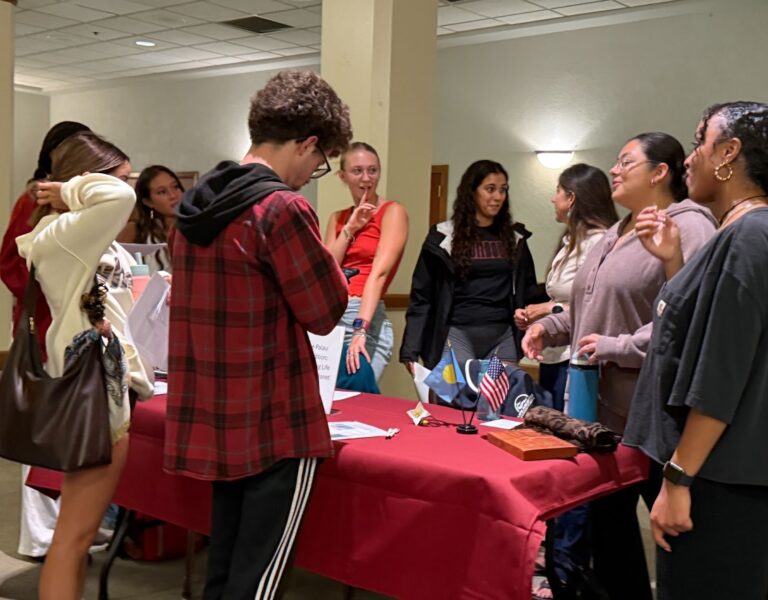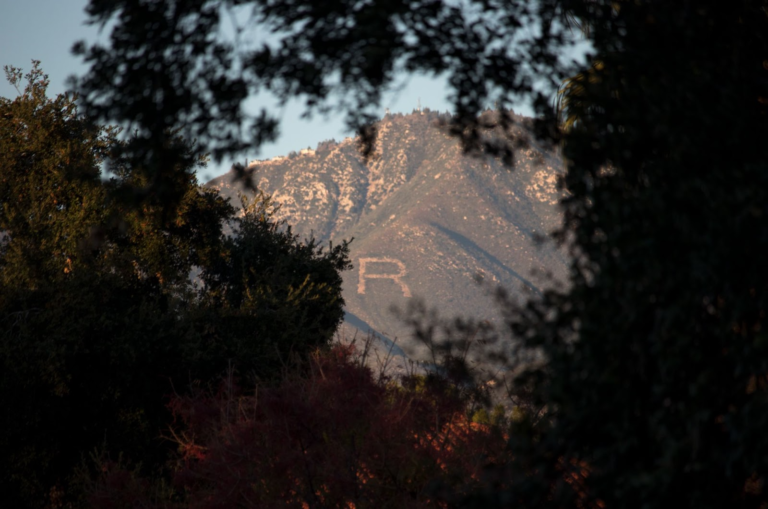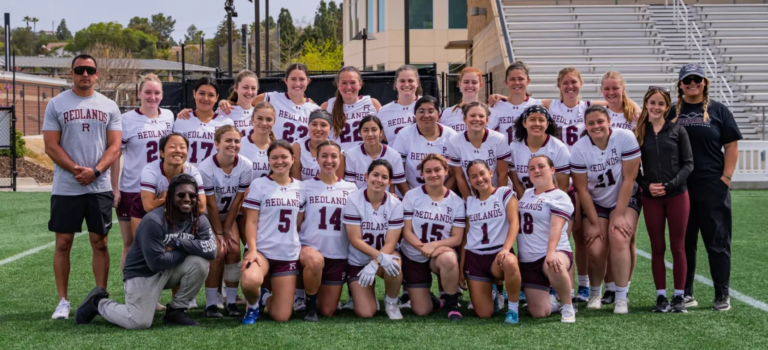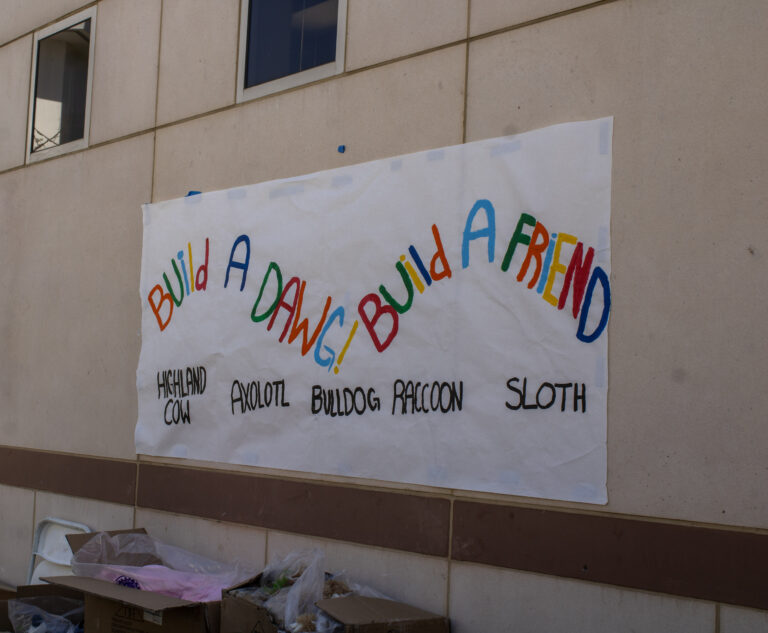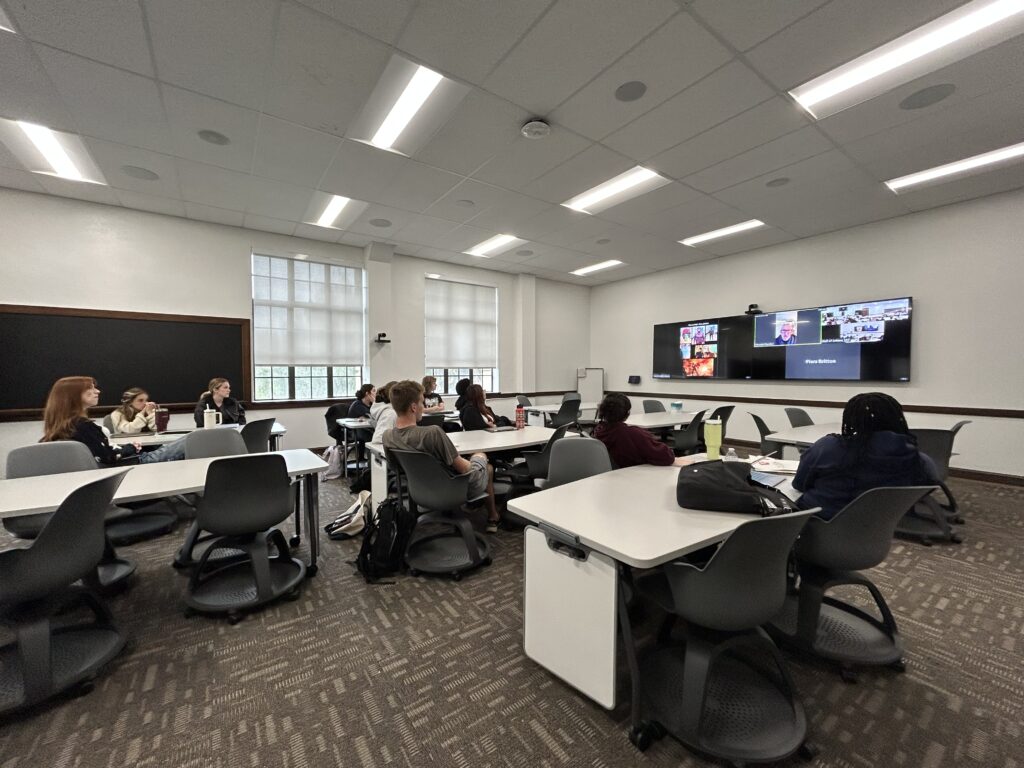
Amidst stained wood, chalkboards and ceiling engravings in the University of Redlands’ Hall of Letters building sits a room with a modern twist.
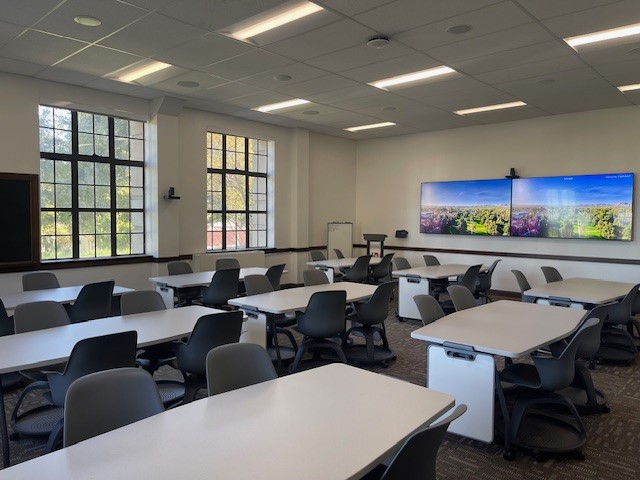
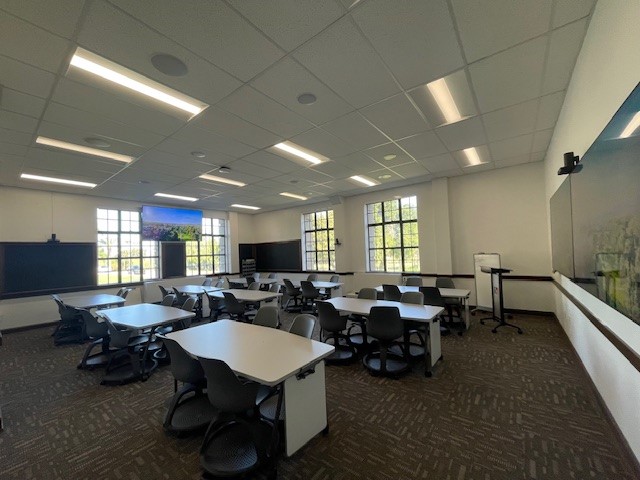
The recently renovated Hall of Letters 101 awaits action on April 4. One of the project goals was to preserve the Greek revival style while also installing modern technology. Photo credit: Anuradha Diekmann, the University of Redlands Senior Director of Sponsored Program Development
Anne Cavender, the associate provost for faculty and academic innovation, said their goal is to spread technological enhancements throughout the campus rather than consolidating it within Armacost Library. She said Hall of Letters was chosen as one site due to its historical architecture and character.
“The vision was to really say to the world, ‘the University of Redlands is a place where our faculty and our students are engaged with all kinds of technologically enhanced learning,’” she said. “And that happens even in the building that looks like Hogwarts – even in the most historic, old-fashioned looking building, this kind of tech-based pedagogy can happen.”

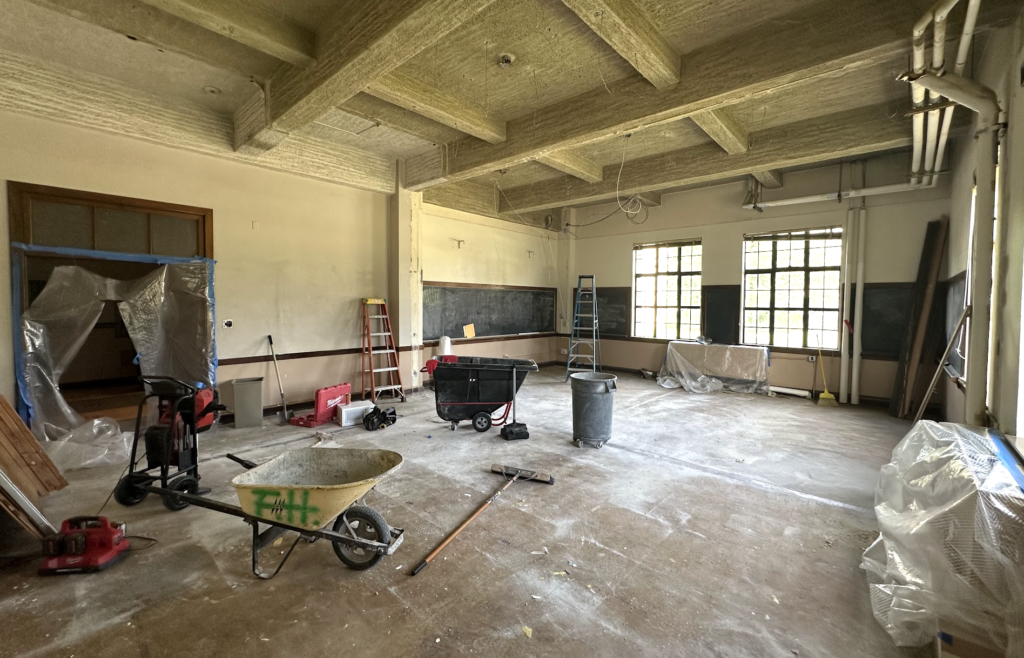
HOL 101 through various stages of renovation during March of 2024. This project was completed by KAR Construction Inc. within a year. Photo credit: Cheyne Murray, the University of Redlands Senior Director of Instructional Technology
Hall of Letters’ (HOL) 101 classroom combined two former classrooms, HOL 101 and 103. In addition to enlarging the capacity to 34 students, HOL 101 is outfitted with amenities like white boards attached to maneuverable tables and rolling chairs with backpack storage underneath. As Redlands’ Senior Director of Instructional Technology Cheyne Murray explained, such reconfigurability provides opportunities for group and shared work.
Along with these items, Murray said, is a modern technological system made up of six Yealink microphones and speakers, three auto-zoom cameras and three 85-inch screen LG televisions. Two screens sit adjacent to each other on one wall, with the other mounted on the opposite wall, and all three screens have USB and USBC ports for individuals to connect to.
Murray said features enhance both lectures and presentations, as the two screens on the east wall can be used to display supplementary material while the opposite one functions as a ‘confidence monitor’ with the presenter’s notes. These screens can also be utilized for Zooming, with three screens offering the opportunity to display the Zoom individual, their screen, and a mirror image of the classroom. Murray said the speakers detect noises that direct the auto-zoom cameras and ensure all students can hear the full dialogue, both of which results in better engagement.
“At the University of Redlands, students are always active learners with the faculty,” Cavender said. “Technology is just one way that faculty can innovate.”
Cavender and Murray pointed out how such technology increases remote learning abilities, teaching collaborations with Woodbury University and guest speaker opportunities.
Thoughts From the Faculty
A training session was held for professors to familiarize themselves with the new technology available in HOL 101, and they were accompanied by a technology consultant during their first class for additional support. There was also an April 3 open house for faculty members to inspect and become more comfortable with the room. In addition to these preparatory events, Murray said there will be Faculty Learning Community meetings where professors share insights on how they use the room and other teaching techniques.
Three professors were able to utilize HOL 101 during the 2025 spring semester: Visual and Media Studies Professor Piers Britton with his Costume Design class, Media and Communications Visiting Lecturer Ross Conkey with his Developing the TV Series course and History Professor Kathy Feeley with her US History on Film class.
Britton had been teaching his Costume Design class in HOL 213 and would move to HOL 217 to use its TV when Zooming guest speakers. Britton said he enjoys having a room that provides both a collaborative learning space and technological amenities rather than having to relocate frequently.
“[HOL 101 has] made massive improvements in terms of what we can do pedagogically, especially those of us who are reliant on external contributors to our classes,” Britton said.
Britton also pointed out how HOL 101 is better equipped for accommodations, as students can participate virtually rather than the whole class being moved to another room. Even though virtual learning will never be the same as in-person, Britton said HOL 101’s technology has made great strides in improving the virtual learning experience with its multiple cameras that enable the off-site individuals to see faces rather than the back of heads.
Another HOL 101 feature Britton appreciated was manipulating the lighting.
“Room darkening is a continual problem for me and for many others who teach film, art history and anything, really, that requires something other than text on the screen,” he said.
Feeley had been teaching her US History on Film in Duke 102, using its projector. Her first class in HOL 101 was held on March 18, and upon moving, she was able to Zoom with one guest speaker a week thanks to the improved quality. In addition to Zooming with guest speakers, Feeley said HOL 101’s technology improves the cinematic experience – a central component of her class.
“You get a sort of sharpness and a clarity of image, and it feels more like being in a theater,” she said. “It helps students to understand that sort of silent cinema experience in a different kind of way.”
Feeley attested that such technology, along with the other amenities and opportunities provided by HOL 101, have increased her teaching abilities.
“I feel like the room itself is like a co-teacher in some ways: supporting me, keeping students engaged and also helping to send the message,” Feeley said.
Student Voices
Several students in Britton’s Costume Design class shared their thoughts on HOL 101. Skylar Ellis ’26, Alison Ashey ’28 and Kiera Lambert ‘28 were all fans of the auto-zoom camera feature.
“It makes interacting a lot easier,” Ashey said. “We don’t have to stand up and [they] can see us better and see who’s talking.”
Ellis and Lambert also pointed out how the pod set-up makes it easier to collaborate with classmates.
“You can swivel around to see whoever’s talking, you can talk in small groups, but you can also join together again and have a big conference,” Lambert said. “It’s a lot easier to see the screen, and then peoples’ heads aren’t blocking you, and there’s a lot more space. That helps me learn.”
A few critiques Lambert mentioned were the lack of outlets and markers accompanying the whiteboards. Such feedback, as project officials and faculty members said, is encouraged and appreciated.
“Students need to let us know what they think. Because if there is a groundswell of support, it makes it easier to argue for using scant resources in this kind of way in the future,” Britton said.
Building HOL 101
Murray said the comprehensive educational strategic plan, of which HOL 101 is one part of, started in February of 2023 with the “Classroom of the Future Round Table” conference. It included individuals from the University of Redlands, University of California Irvine, the University of Portsmouth and design and architecture firm Sasaki Associates. That July, Murray toured UC Irvine’s “Active Learning Pavillion” with Provost Adrienne McCormick and Dean of Business Thomas Horan for additional insight.
Anuradha Diekmann, the senior director of sponsored program development, said the $1 million Fletcher Jones Foundation Grant was applied for in November of 2023 and awarded the following month. The money is allocated to enhancing technological teaching and learning opportunities, supporting faculty innovation related to immersive education and fostering peer learning.
This was the second Fletcher Jones Foundation grant that the University of Redlands had received in Diekmann’s time at the university. Among other things, the $950,000 grant from 2020 expanded the Computer Center, Makerspace, Media Production Center and Critical Information Literacy Lab.
Construction on HOL 101 began in the summer of 2024, with the first class being taught in that new room near the end of February 2025. Although they encountered some delays due to the Woodbury acquisition and global supply chain issues, HOL 101 was still finished ahead of its expected May Term completion date.
But Wait, There’s More!
HOL is just the first in a series of educational renovations. Cavender said they are working on creating a similar room in Larsen Hall, as well as four outdoor student spaces with chairs, tables and solar-powered umbrellas outfitted with outlets. All these projects, which are part of the $1 million Fletcher Jones Grant, are estimated to be completed by 2026.
McKenzie Rose is a freshman at Redlands with interests in Environmental Studies and Journalism. She worked for the last three years as a freelance journalist with the Hermiston Herald, a newspaper near her hometown of Echo, Oregon. She is looking forward to covering the interesting, the exciting, and the intriguing happenings at the university for the Redlands Bulldog!

